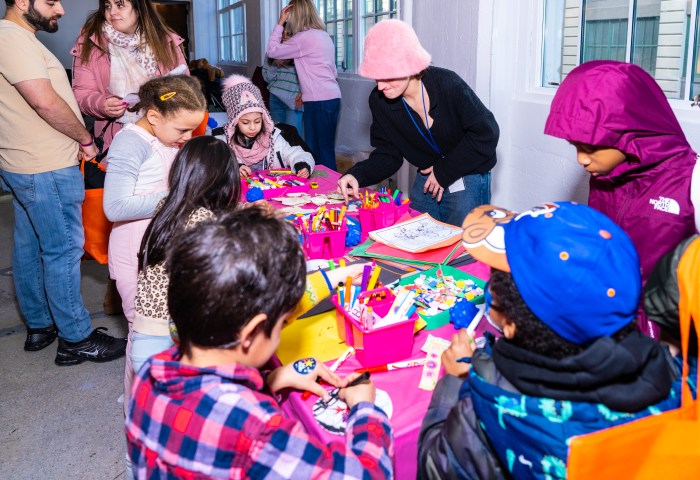
BY GABE HERMAN | With the High Line’s newest section, the Spur, set to open in April, final work is being done on this offshoot before it officially becomes real.
Construction continues at the site, which runs east at 30th St. from the main High Line, and ends with an open plaza above 10th Ave. that will feature the Plinth, a rotating art space.
On a recent tour of the Spur, Robert Hammond, co-founder and executive director of Friends of the High Line, walked through the various sections of the space. These include a passageway underneath the tower at 10 Hudson Yards, then a planting bed that is the largest and deepest in the park, and ending in the open space at 10th Ave. that will be available for programs and events, and will have benches and the Plinth artwork that will change every 18 months. The first installment is “Brick House,” by Simone Leigh, described as a 16-foot-tall bronze bust of a black woman.
The entire Spur was originally an offshoot of tracks from the High Line for trains to enter the Post Office building at 10th Ave., which is still there and in use. The tracks will be visible along the new path.
The open plaza has remarkable views of the city in all four directions, including down 10th Ave. and at the base of Hudson Yards.
“This is not an escape from the city,” Hammond said as he stood on the Spur over 10th Ave. “A lot of parks, you’re meant to feel you’re out in the countryside. This is about the city.”
He acknowledged that some may think it ugly to view advertisements, or all the big buildings, from the new location.

“To me, this is what makes New York,” he countered. “This combination of it all. Yet, you have this planting, and it’s completely public space that’s free for everybody.”
The planting beds will have the park’s biggest trees and be meant to surround visitors in a mini-forest of sorts.
“It will create this sort of green threshold that you walk through,” Hammond explained. “It’s meant to compress you a little bit. There will be green on both sides, then will open up.”
The “Brick House” sculpture was selected by the curator of the Friends of the High Line’s art program after a competition for different ideas and input from the public.
“I’m really excited for this artwork. It will stand as a kind of beacon over 10th Ave.,” Hammond said.

The passageway that connects the plaza to the main part of the High Line will include balconies with reclining chairs that allow visitors to look straight up the side of the huge tower. Hammond said Hudson Yards initially resisted redeveloping the Spur as part of the elevated park, but relented after a strong “Save the Spur” campaign. He said he thinks the Hudson Yards developers are now O.K. with how the project has turned out.
There will be a public restroom tucked behind the raised planting bed, in response to requests by the community. Local input was important in determining the Spur’s final designs, which Hammond said focus on the three popular issues — plantings, arts and programs.
“There’s so many spaces in New York that aren’t accessible,” he said. “This is meant to be completely accessible and open to anyone, and people can use it in many different ways.”
Friends of the High Line has done a lot of work in recent years to make the park more welcoming and appealing to locals, including nearby public-housing residents, said Hammond. Listening to feedback and suggestions led to events like salsa dancing every month during the summer, and teen events decided on by the teens rather the park. More than 70 percent of the park’s teen employment program includes people of color.

“Just because you have a space that’s public and free does not mean that everyone feels welcome,” Hammond noted. “You have to think of it as more than just a park. I think we’re still figuring it out. We do not have the answers, and we need to keep evolving as the city keeps changing.”
Hammond said he’s also excited this fall for a meeting of the High Line Network, at which representatives of industrial reuse projects nationwide meet in New York to exchange ideas and lessons, including how to spread economic benefits to the most people in communities.
Hammond said there is a lot of excitement for upcoming milestones this year.
“This is a special year for us because this is the last section of the High Line, it’s the 20th anniversary since we started the project, and 10 years since we opened,” he said. “All of it’s happening at once and it’s just hard to believe that 20 years ago, this was a project that was most likely never going to happen, was so unlikely. So it’s such a crazy idea that it’s become this reality.”

































